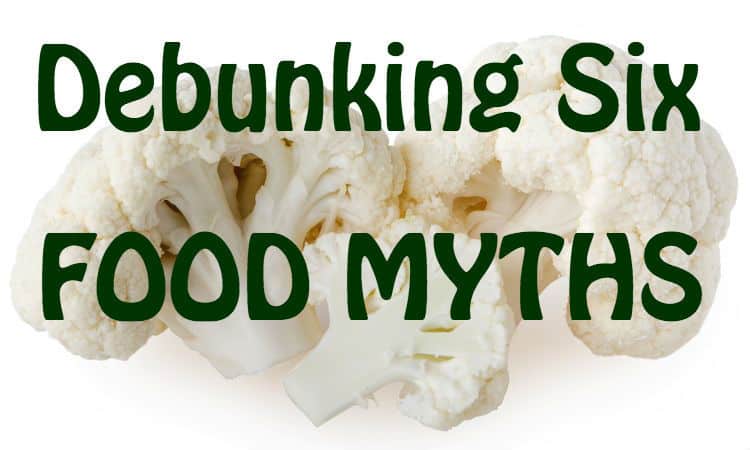With so much information about food and nutrition available on the Internet, TV, and social media, it can be hard to separate fact from fiction. From the misguided war on fat of the 1990s to the low-carb craze of the 2000s, there is a general lack of consensus on what constitutes good nutrition. This week, Food Tank sorts through the latest studies to permanently debunk six of the most common food myths.
1. Buying Sustainable Food Is Too Expensive: While it’s true that organic food is typically more expensive than conventional foods, many of the harmful costs of conventional food are not factored into the price shoppers see at the supermarket. What’s more, depending on region and season, a study from the Leopold Center for Sustainable Agriculture at Iowa State University found that buying local can be a less expensive alternative than what’s available at the grocery store. Resources such as Local Harvest, Eat Well Guide, and Eat Wild can help consumers find the nearest CSAs, Farmers Markets, and local suppliers. Making other choices, such as buying in season and reducing food waste, can also help reduce costs.
2. White Vegetables Lack Nutrients: With emphasis frequently placed on the merits of eating a wide range of colorful produce – or, as some like to call it, “eating the rainbow” – it’s easy to dismiss the merits of plain white produce. But many white vegetables, including cauliflower, mushrooms, garlic, and even some varieties of potatoes, have a host of nutritional benefits. According to a scientific roundtable published in Advances in Nutrition, eating white vegetables can “increase shortfall nutrients, notably fiber, potassium, and magnesium, as well as help increase overall vegetable consumption among children, teens, and adults.”
3. Fresh is Best: When it comes to buying produce, it stands to reason that fresh fruits and vegetables are fresher than their counterparts in the freezer aisle. In reality, frozen produce is typically the freshest option. Frozen fruits and vegetables reach full maturity before being picked and are flash-freezed immediately after harvesting – allowing them to maintain maximum freshness and nutrient content. In fact, a 2013 study carried out by scientists from Leatherhood Food Research and University of Chester found in 2 out of 3 cases, frozen fruits and vegetable are richer in antioxidants – including polyphenols, lutein, and beta-carotene – than “fresh” produce. Dried fruits and vegetables have similar benefits. And according to AVRDC-The World Vegetable Center, “Selling dried chili can earn up to a third more income than selling fresh produce,” making dried produce more economically sustainable as well.
4. Eggs Raise Cholesterol: Despite the common belief that eating eggs can lead to high cholesterol levels, eggs are actually a good nutrient source. Egg yolks contain a wide range of vitamins and minerals, including calcium, iron, phosphorus, zinc, and vitamins A, D, and E, as well as the antioxidants choline, lutein, and zeaxanthin. While eggs themselves are high in cholesterol, a widely cited study by M.L. Fernandez from the University of Connecticut College of Agriculture, Health and Natural Resources showed they do not raise cholesterol in humans.
5. Choose Low-Fat: For several decades, experts touted a low-fat diet as the key to weight loss. The problem is that there are good fats and bad fats, and low-fat diets typically lead to a restriction of fats overall. This fear of fat spurred a rise in reduced-fat and fat-free products. Consumers replaced fats with refined carbohydrates – believing reduced-fat or fat-free products to be “guilt-free.” To compensate for the lost flavor in these products, manufacturers frequently replace fat with sugar or salt – as this Telegraph analysis depicts – leaving consumers with a product lower in fat but comparable in calories. Since the adoption of the low-fat diet, consumers are eating less fat but are more overweight than ever.
6. Pack on the Protein: According to the Nutrition Business Journal, Americans are currently spending roughly US$3 billion a year on sports nutrition powders. The problem is, most people are already getting more than enough protein in their daily diets without turning to supplements. According to the Centers for Disease Control and Prevention (CDC), the Recommended Dietary Allowance of protein is 56 grams for men and 46 grams for women. A 2008 report released by the United Stated Department of Agriculture (USDA) found that Americans are consuming nearly twice that amount, with the average male consuming 102 grams and the average female consuming 70 grams of protein on a daily basis.















